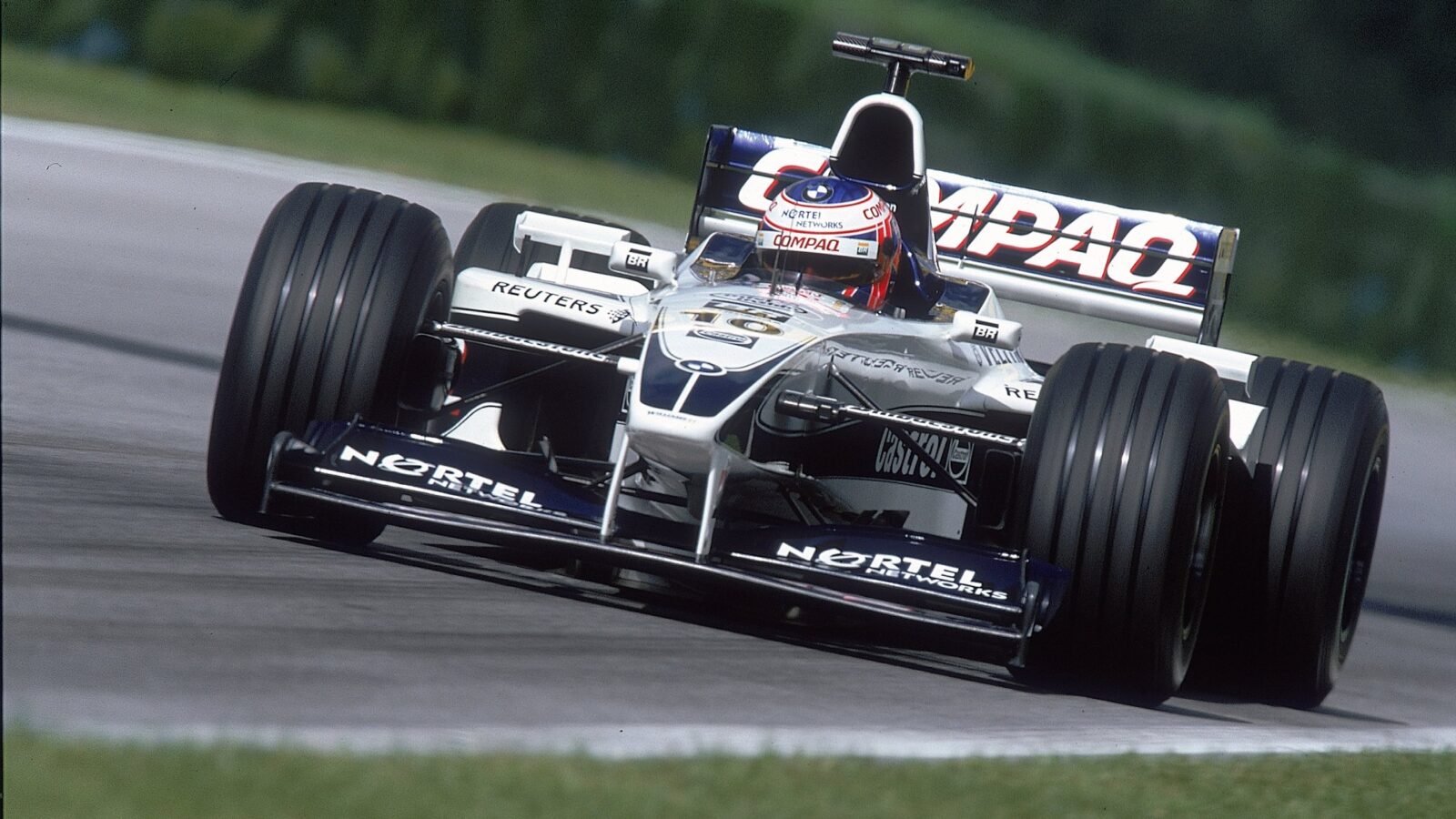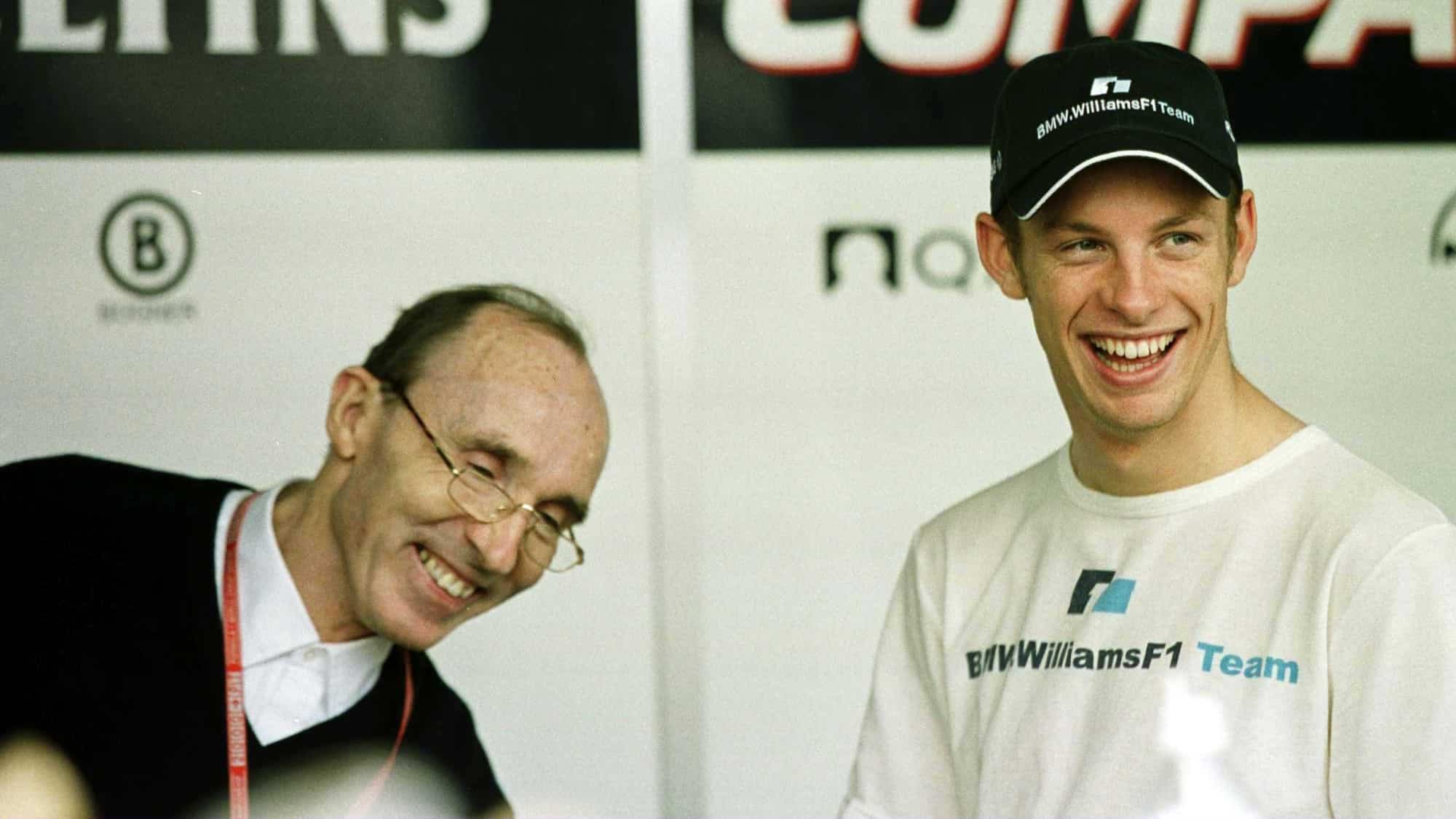If Ralf felt vindicated at Jenson’s incident in Australia, he was stunned two weeks later in Brazil where Button — on a track as complex and demanding as Interlagos and which was completely new to him — outqualified his team leader. This wasn’t a no-hoper he was outpacing. This was Ralf Schumacher, with a reputation as one of the fastest, most aggressive drivers in the sport. The same Ralf Schumacher who Head referred to preseason when talking of Button’s chances: “If he thinks he’s going to be able to go in and start out-qualifying Ralf in his first season, he’s not being realistic.”
It happened again at Silverstone, one of only three F1 tracks Button knew before a race weekend got under way. There he was fastest non-McLaren/Ferrari. In Canada, after a delay, his wet-weather laps were fantastic. He was trading times with Michael Schumacher, though few noticed as he was way down the field.
Taking Ralf as a barometer, Button’s form, though outstanding for a newcomer in only his third season of car racing, was patchy until mid-season. It was during a wet practice session at Hockenheim that something clicked. From this point onwards Button was sensational. With low downforce on a wet track, “I just suddenly felt really on top of the car in a way I hadn’t before,” he says. “I can’t really describe how or why; it just felt different After that, I started learning things quicker than I’d ever learned before.” His learning curve, in fact, went off the scale.
At the beginning of that race he was last away, his engine cutting out on the formation lap. By the end of it, he was pressuring David Coulthard’s McLaren for third. As the wet conditions caught out many more experienced drivers, all you saw of Button were fabulous, back-from-the-brink oversteer saves. In a Williams that was good rather than great.
It was probably significant that by this time he had evolved his own set-up, rather than following Ralf’s route as he had done earlier in the year. He runs a much softer front end than Ralf, and usually less wing, too. The car is allowed to ‘breathe’ more. At Spa — the acknowledged driver’s track — the qualifying result of this was devastating. This time, he didn’t just outqualify Ralf; he did the same to Michael to take third on the grid. Along the way he was the only driver to notice that the 100-yard board for La Source was placed about 25 yards too late. His total belief in his own senses overwhelmed what the board was telling him.
Even the most cynical had their heads turned by his performance that weekend. Button, however, didn’t hold a grudge against these late converts. Someone who knows like he knows can afford not to. His manner right from the off has been natural, open, and there seems no malice in him. Asked questions on the record he will answer with as much frankness as possible. That dealt with, in the next breath he’ll be talking to you as a fellow human rather than as something a long way down the food chain, unlike many others in the paddock. He’ll even hang about to chat preferably not about racing after his allotted press time. It’s totally unforced, completely genuine. He’ll happily take what’s on offer in the way of, say, limos or exclusive parties, but doesn’t give the impression of taking it seriously or getting caught up in it. The racing is still the focus and his feel for where the balance point is between work and play appears finely-honed.
By now it felt almost normal that, at Suzuka renowned as the most difficult track to learn Button should be among the quickest on his second day there, in the thick of the Ferrari/McLaren group in practice, the nearest thing to them in qualifying and race. There were only three drivers operating at an extraordinary level that weekend the two tide contenders and Button. It looked that way on the track, the stopwatches confirmed it.
Patrick Head was convinced. Frank Williams was vindicated.
As Button drove down the Suzuka pitlane for his final qualifying run, he said over the radio: “I’m going to give it large, boys.” Hardly F1-speak. Frank shook his head, acutely aware of the generational and cultural gap. But he was smiling. No wonder.



